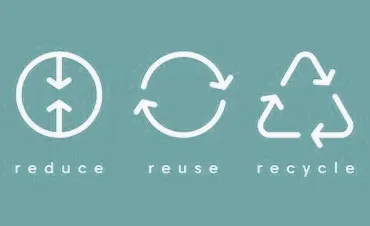In a recent Scientific American article they argued that “recycling plastic is to saving the Earth what hammering a nail is to halting a falling skyscraper.” But why? Let’s break the problem down into three categories:
- Why the rate of recycling is so low
- Why there’s so little demand for it
- Why it has been pushed as a solution to pollution
Recycling Rates
According to the EPA, only 8% of plastic waste in America in 2017 was recycled. This is caused by a lack of infrastructure, high waste contamination rates, and the fact that plastic just doesn’t recycle well. America doesn’t have a federal recycling program, so the responsibility of recycling falls on each municipality. Some of these actually do a pretty good job, San Francisco keeps around 80% of its waste out of landfills. However, these are huge outliers. For example, in Cleveland, the city spends $14 million dollars a year to collect recycling. Residents separate waste into recycling bins, recycling trucks come and pick up the waste, and then go drop it straight in the landfill. It’s mind boggling, but it’s true, and Cleveland is more of the norm across the country than San Fransisco. Republic Services, one of the largest garbage haulers in the country serving over 2,800 communities, says that one-third of the waste collected by their recycling trucks never gets recycled.
Another reason recycling rates are so low is that a huge portion of recycled waste is contaminated. It is estimated that a quarter of all recycled waste is contaminated and gets diverted to a landfill. I was definitely guilty of this until recently, I would look at something I was throwing away and think, eh this looks kinda plastic, I’ll throw this in the recycling. Unfortunately, that well-intentioned decision sometimes hurts more than it helps. In order to effectively recycle, recyclers must have a clean, free of-food waste, plastic item that is made from a type of plastic that they accept. Not all plastic is recyclable, and it varies by facility which plastics they will accept. Plastic bags can’t even be recycled at all. If you have any food residue on an item, it’s contaminated and goes straight to the landfill.
So what about the plastic that actually is recycled? Unlike other waste such as glass, metal, and paper that can be recycled over and over, plastic can only be recycled once or twice, and it loses its structural integrity so much that only a fraction of the original material is usable, and almost never in the same application it was originally made for. It is just not a material that was made to be recycled, and there is so much plastic out there that you could never recycle enough for it to matter.
Demand Issue
Recycling costs money, and a lot of it. In order to pay for it, you have to sell enough of the recycled material to cover your costs. So who buys it? For decades, it was China, but the waste we sent them was so contaminated (30% contamination rates) that they banned most plastic imports from the US in 2018. Instead of addressing contamination, we just went to other countries like Vietnam, Malaysia, and Thailand. They caught on pretty quickly and instituted bans on imported plastic waste as well. Now we ship to other smaller Southeastern Asia countries, but at a fraction of what we used to, and we still haven’t fixed contamination as around 45% of the waste we send ends up in their landfills in oceans. Municipalities went from making money on their recycling to paying up to 7 times more to get it removed than they were making in the first place. Compounding the issue is the fact that virgin plastic is less expensive and of higher quality than recycled plastic, offering no incentive to manufacturers to use recycled material.
Why Is This Still Pushed as a Solution?
Plastic manufacturers, obviously. They know that most consumers at this point are eco-conscious, and if they can convince the population that recycling is solving the pollution problem, they can continue to make plastic. This actually goes back 60 years. Vermont passed the Beverage Container Law in 1953 outlawing the sale of beverages in non-refillable containers. Shortly thereafter, the big beverage companies like Coca-Cola and Anheuser-Busch founded a non-profit called Make America Beautiful. They created campaigns like “I Want to Be Recycled” and invented the term “litterbug” to shift the blame of plastic waste onto consumers who don’t recycle correctly. They convinced the public that the problem was a lack of consumers recycling and not the actual producers of the plastic. They shot down the Vermont bill and other legislation that would increase producer responsibility for waste management. Think about it, why do you get fined hundreds of dollars or even face jail time for littering, but massive corporations producing millions of tons of plastic every year have almost no responsibility?
So What Do We Do?
Reducing and reusing are undoubtedly the best ways to combat plastic pollution. However, the single-use market is not going away anytime soon. We definitely need to increase recycling infrastructure and educate our population on how to properly recycle. But I think there is another better solution: Replacement. Technology is now making it possible to create single-use products out of plant material that can degrade naturally. Granted, the degradation profiles vary widely by product, and there is no standardization for measuring them in America (I’ll be talking about this next week). However, as technology continues to improve, I can see a future where all single-use plastic is replaced with plant-based, naturally degradable single-use products. Reducing and reusing are still the best options, but they will only go so far. I think the perfect complement to the two in order to fully solve the problem is to replace plastic with plants.
